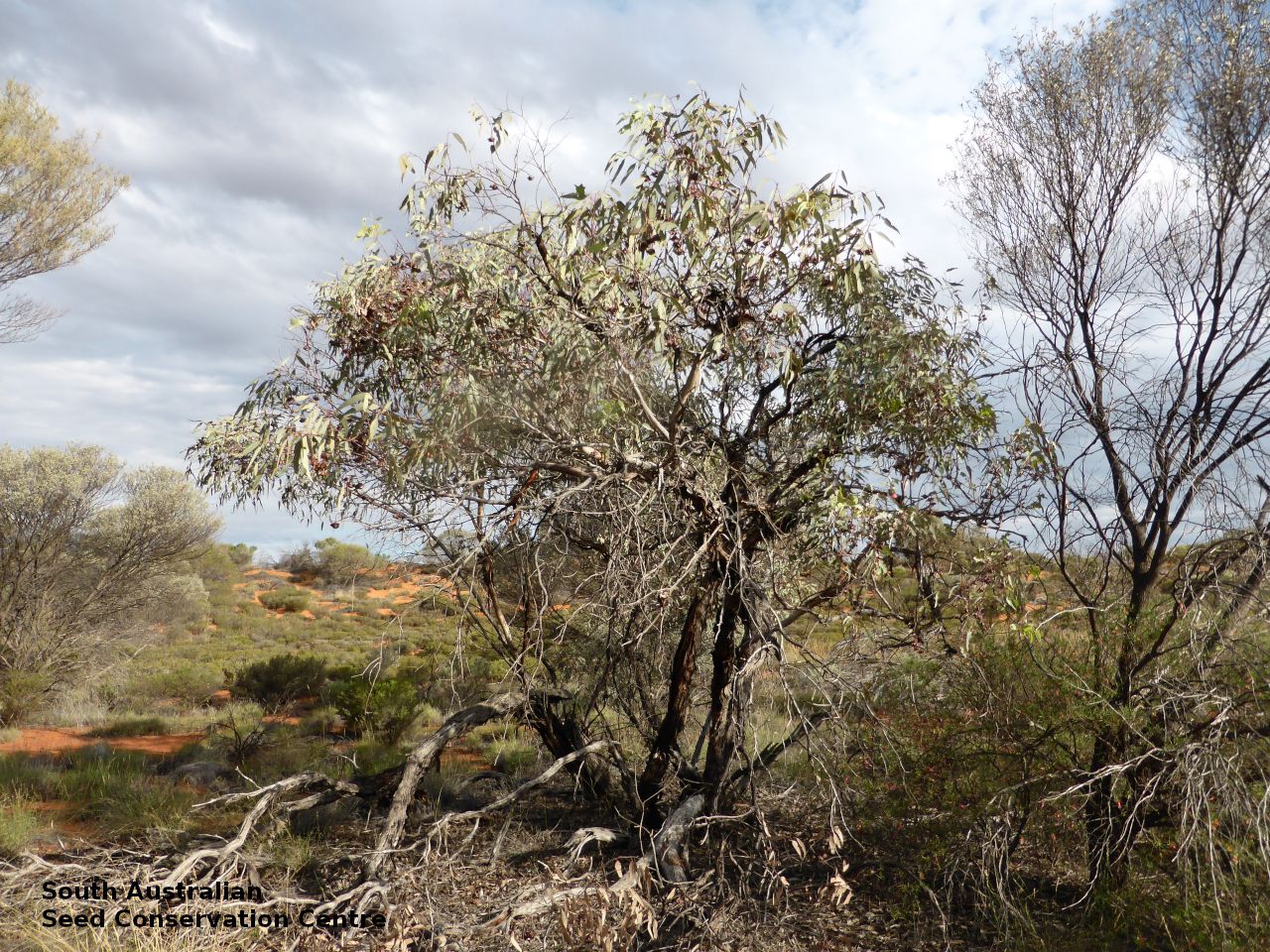
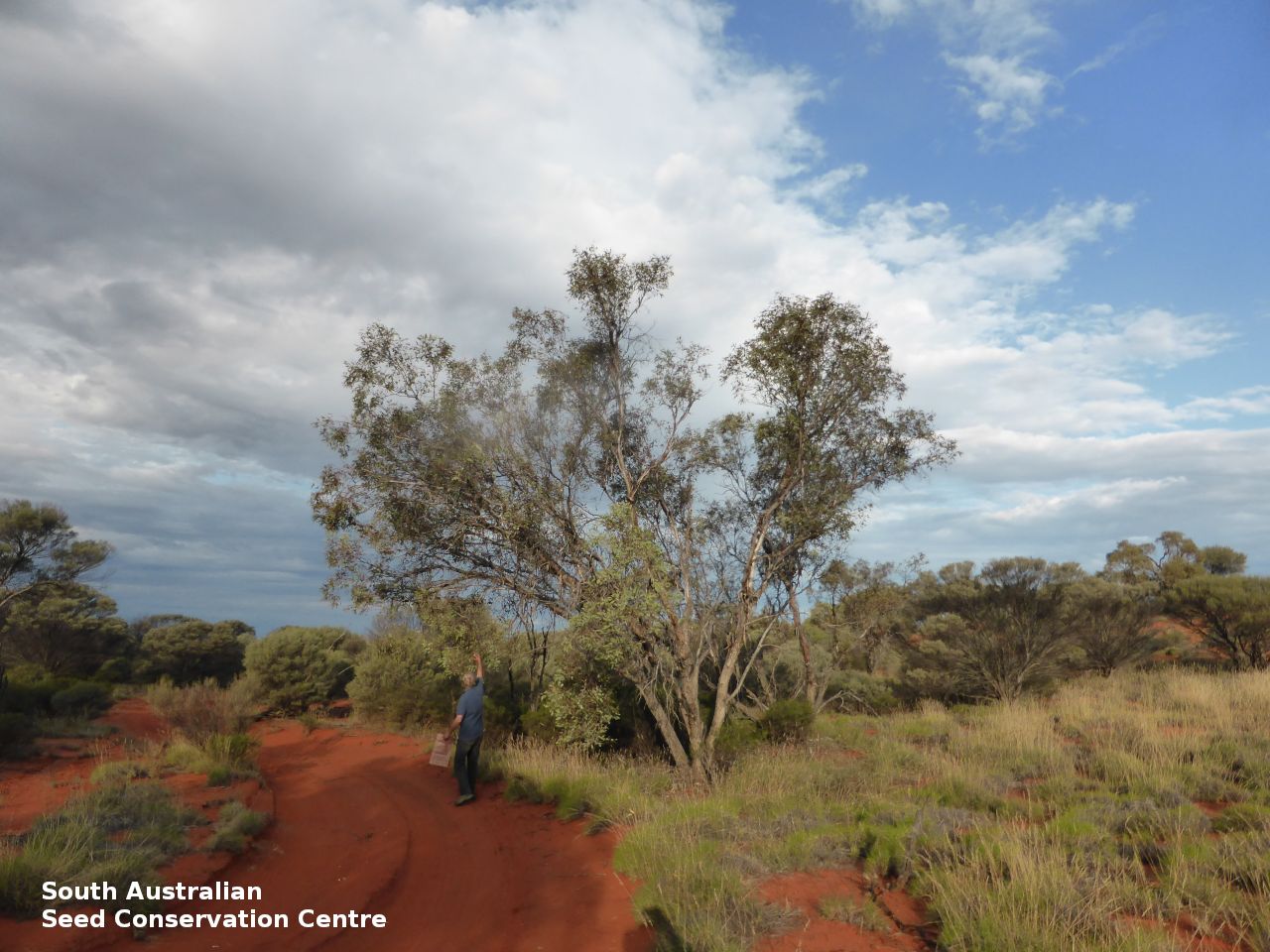
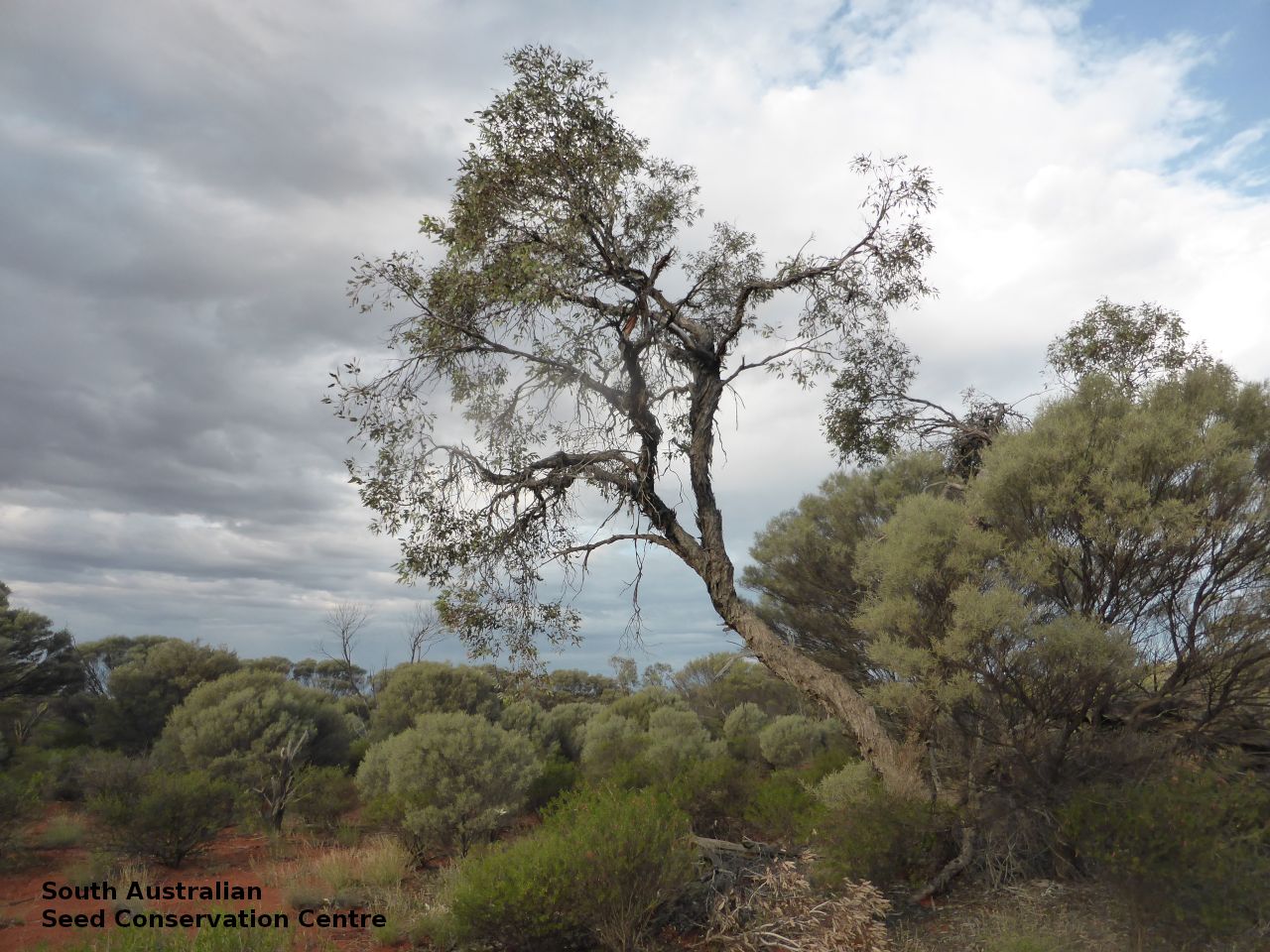
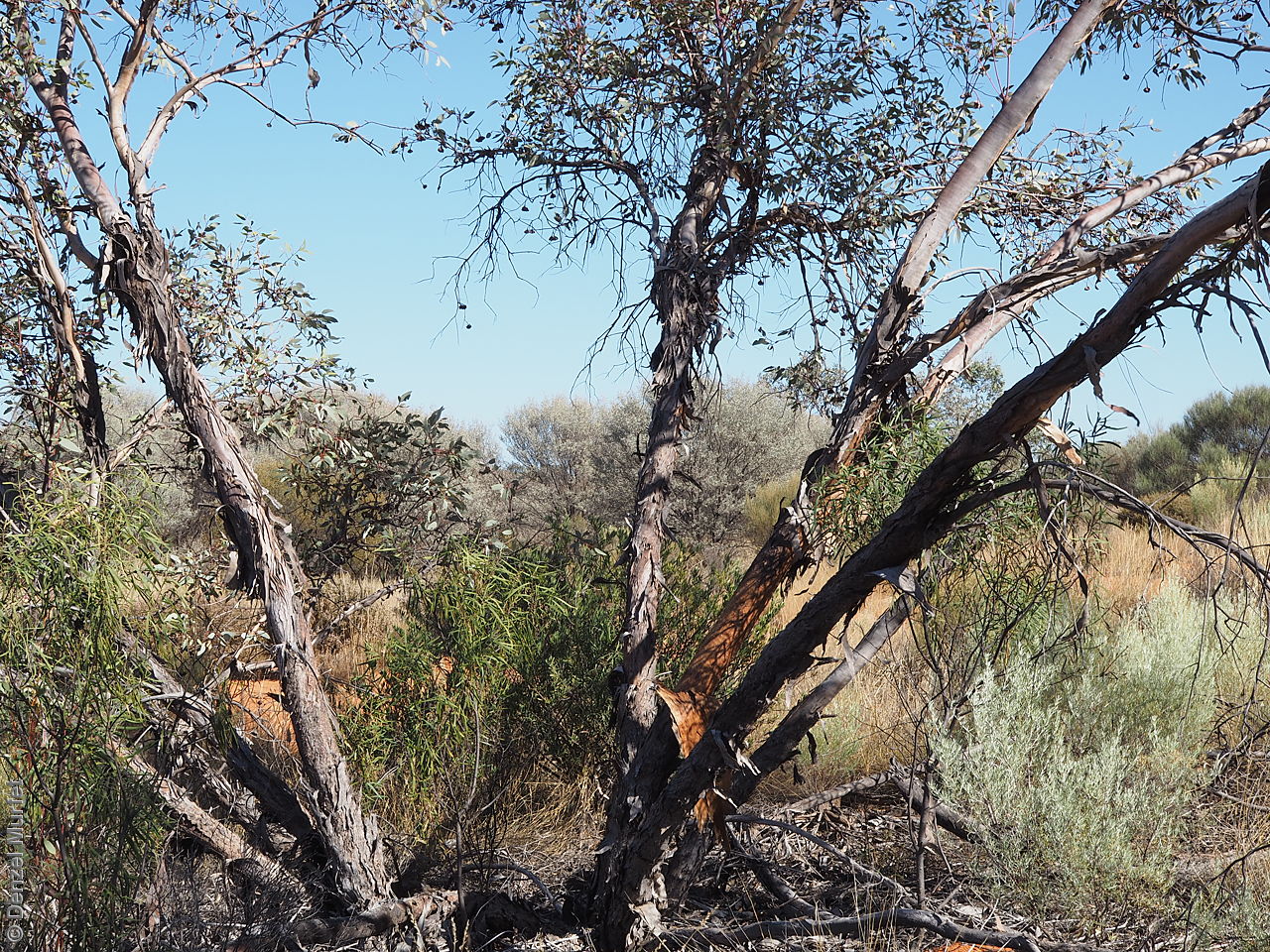
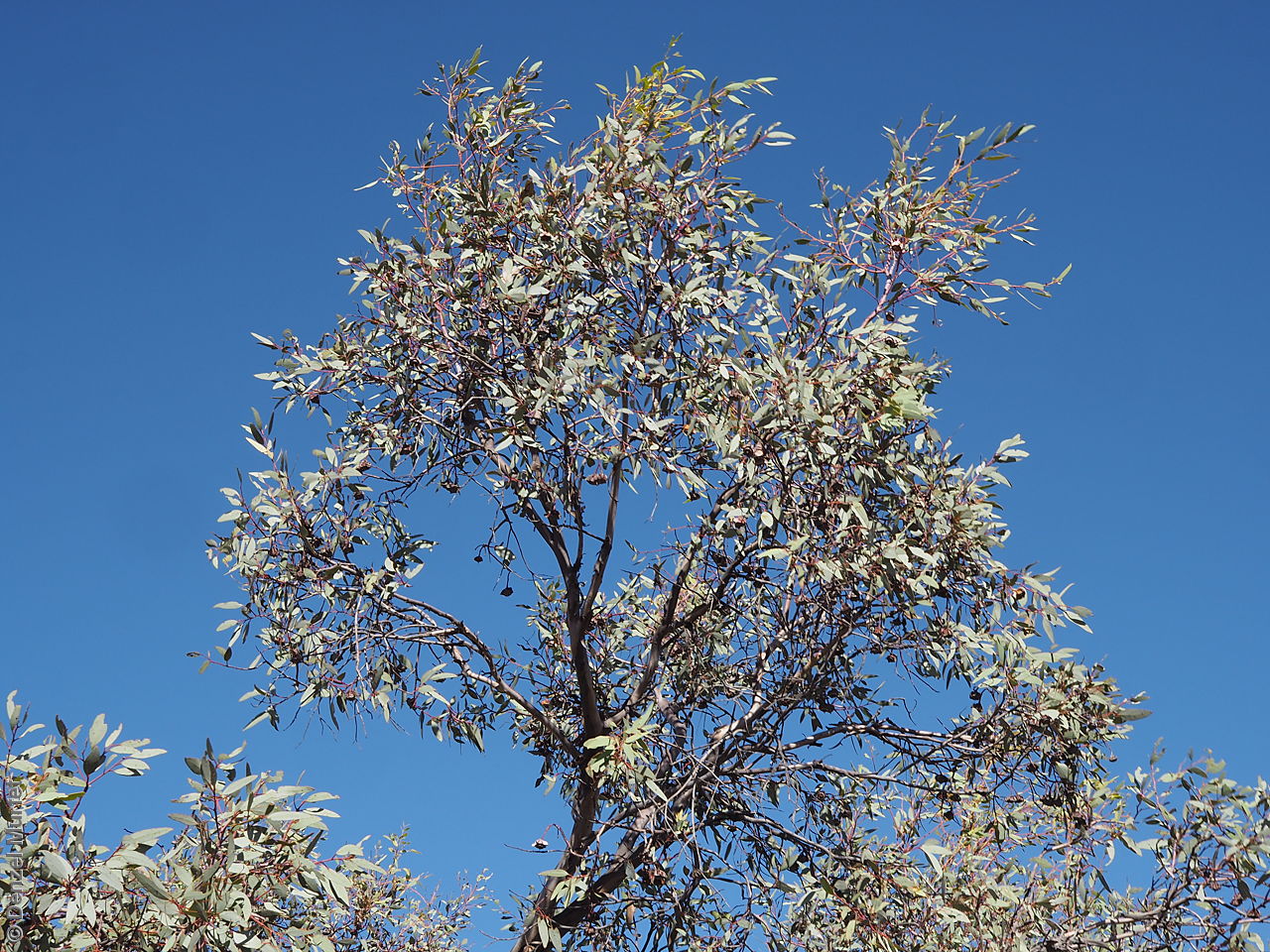
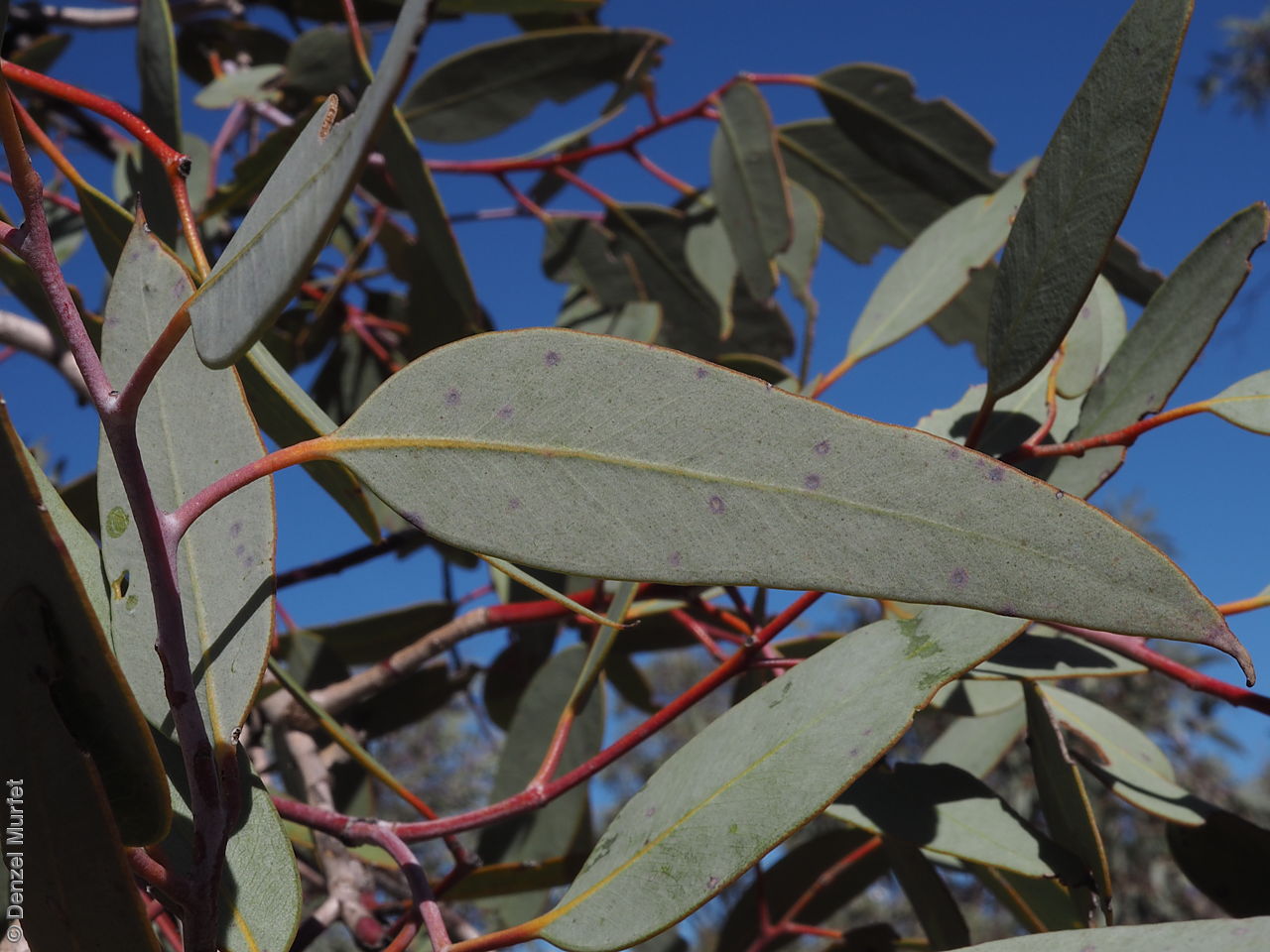
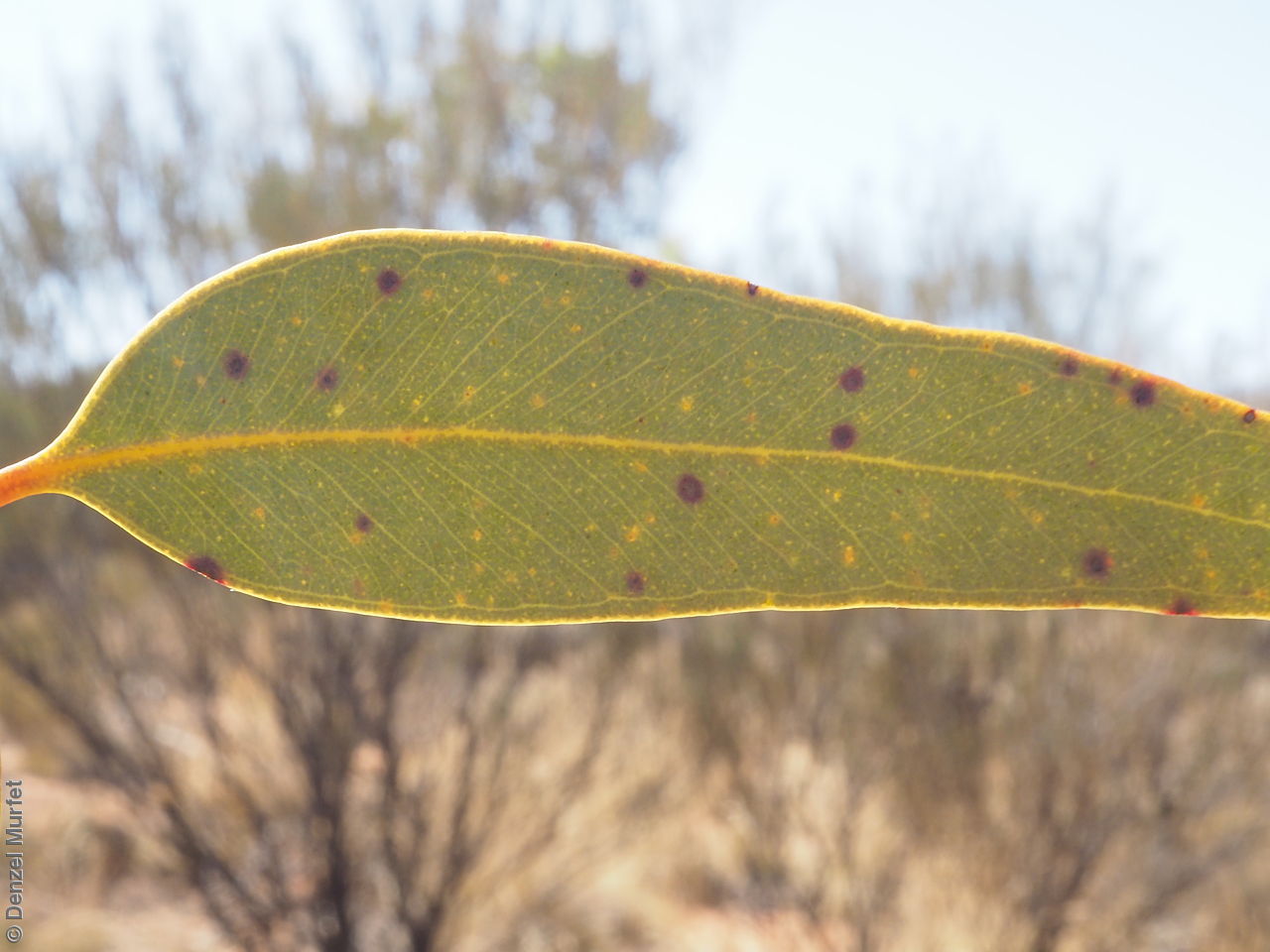
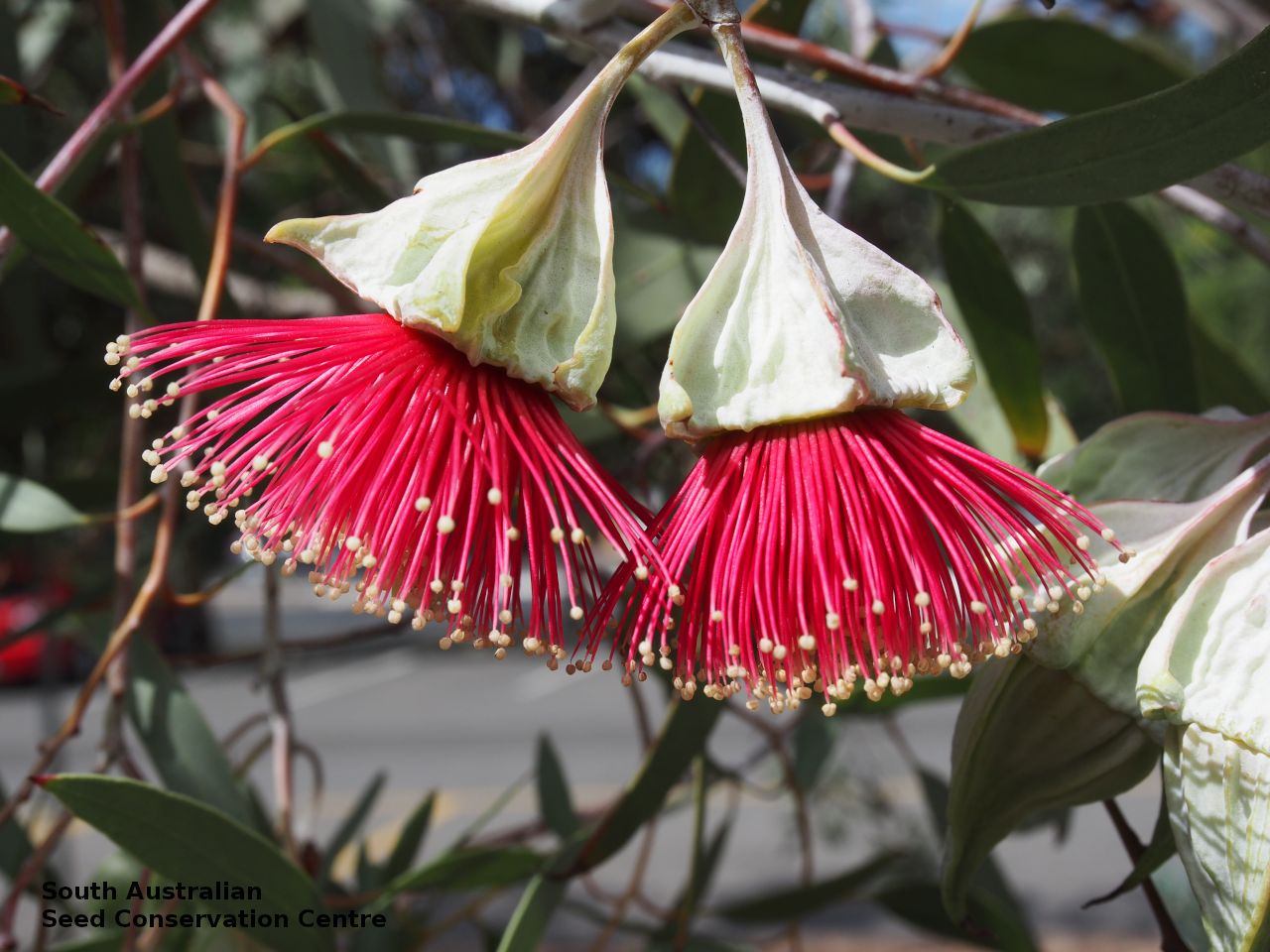
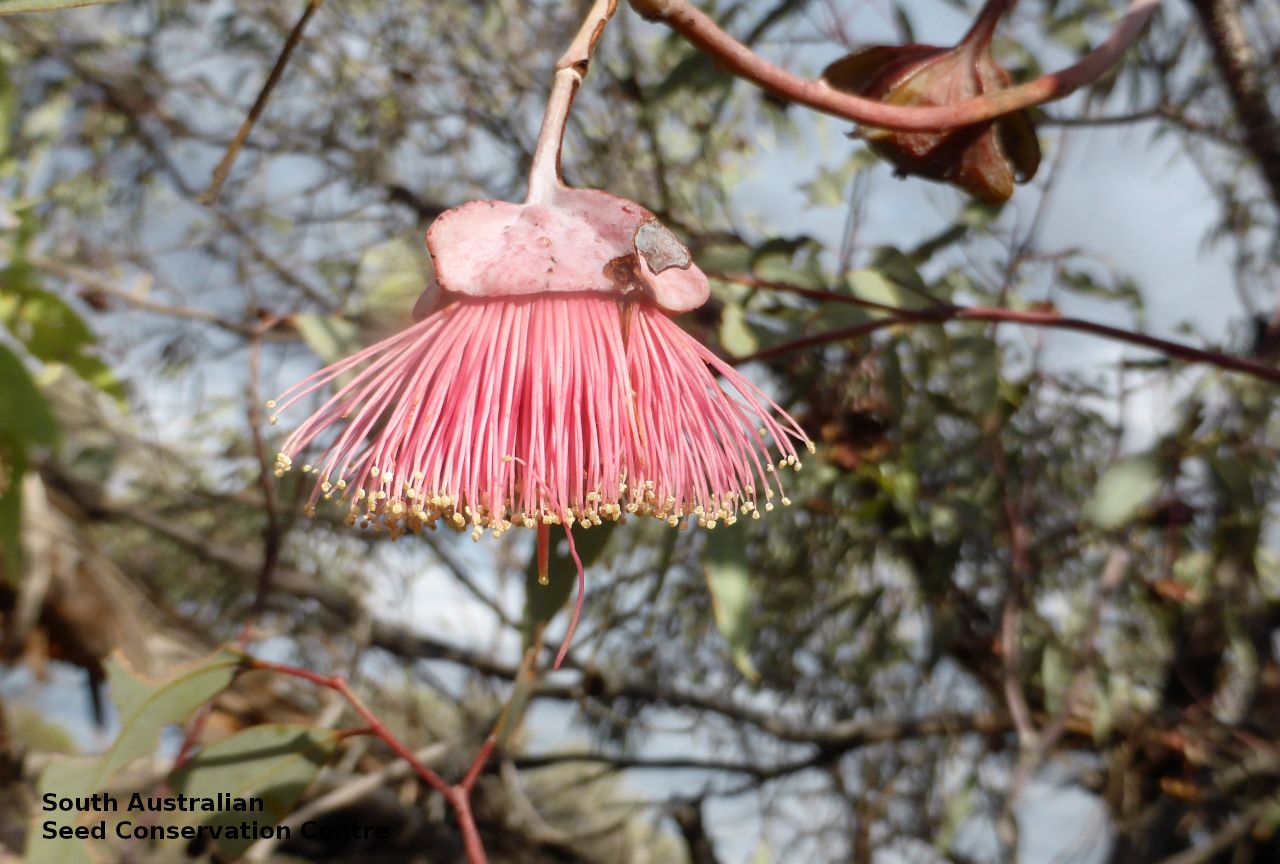
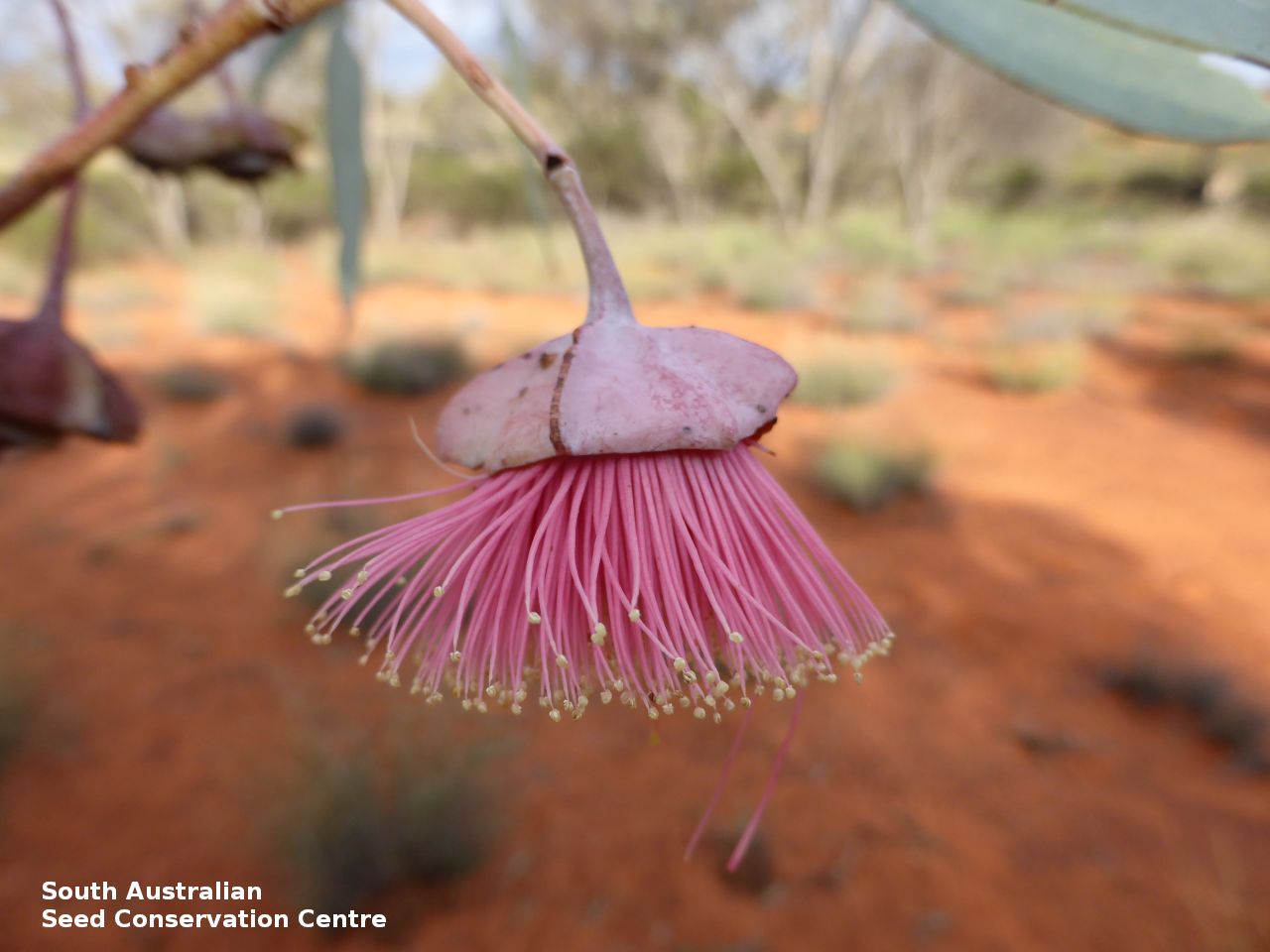
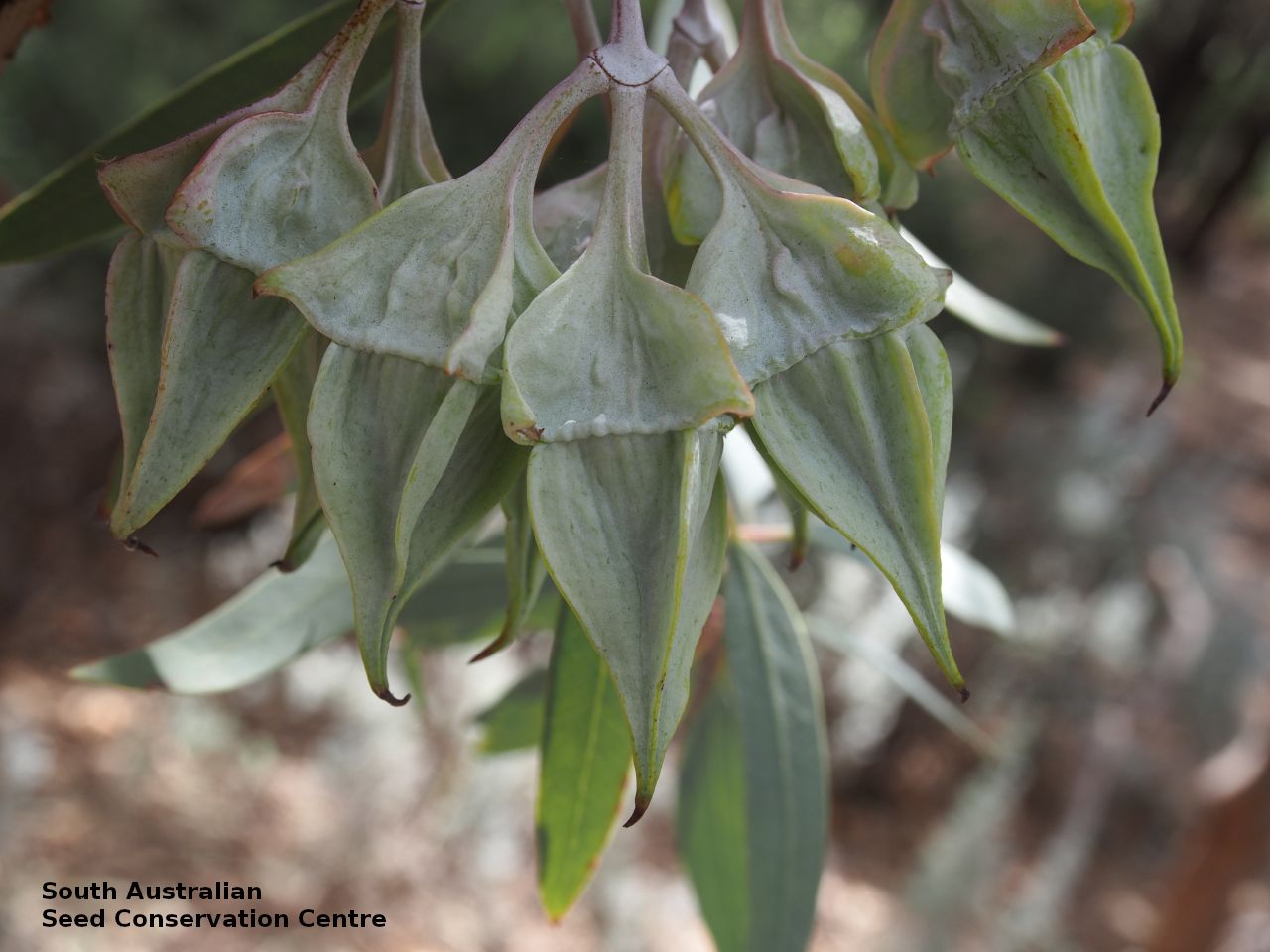

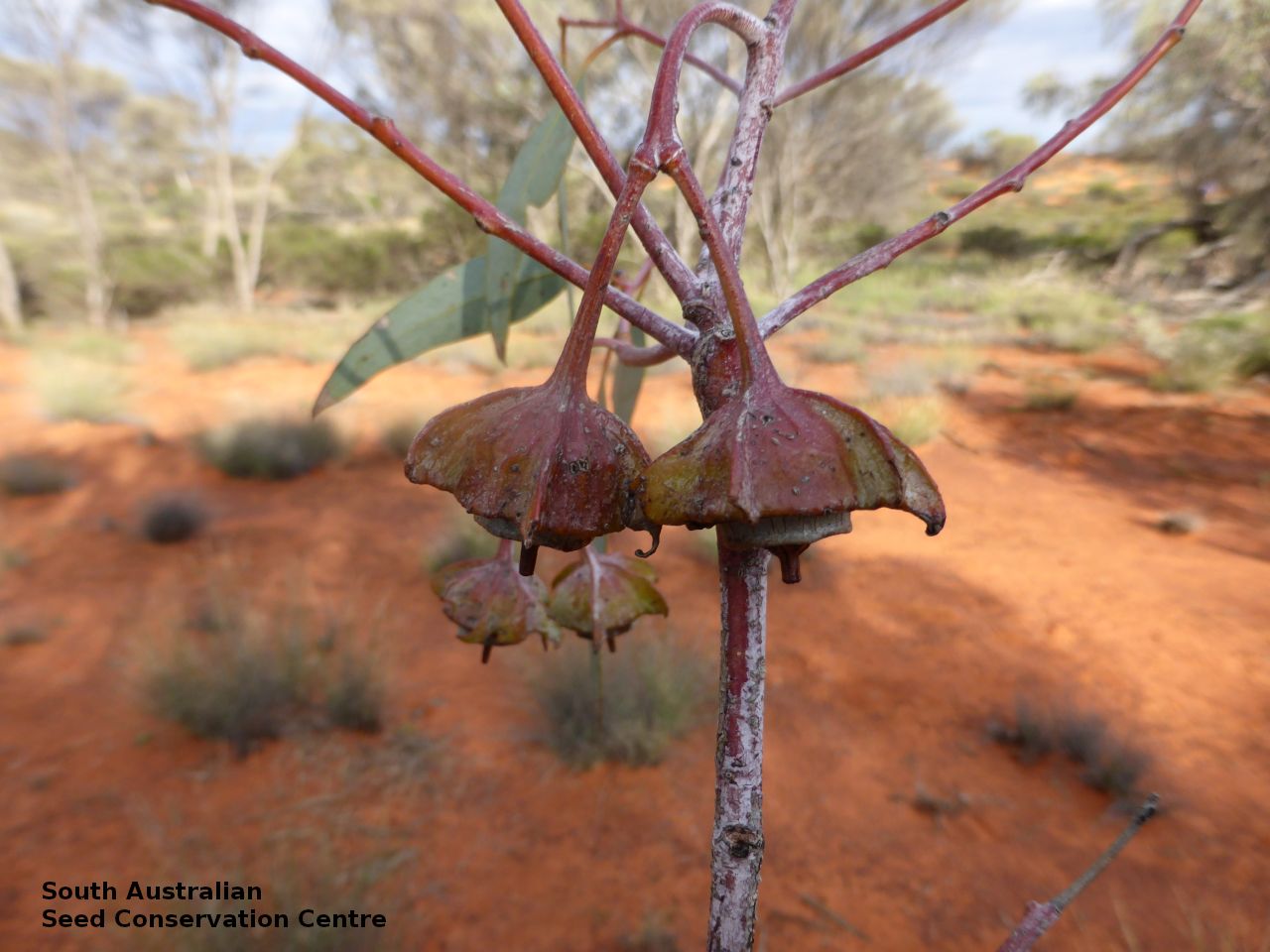
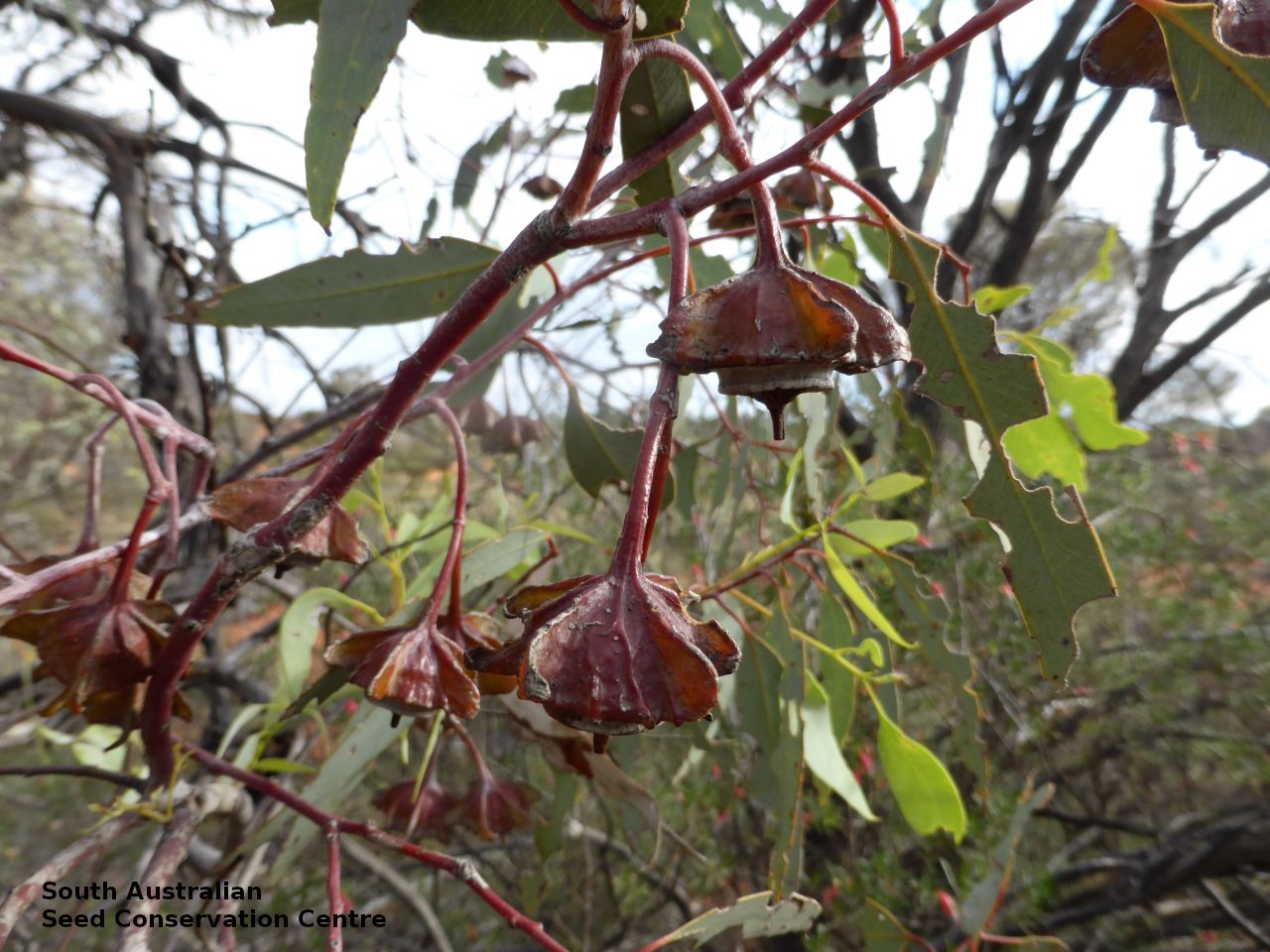
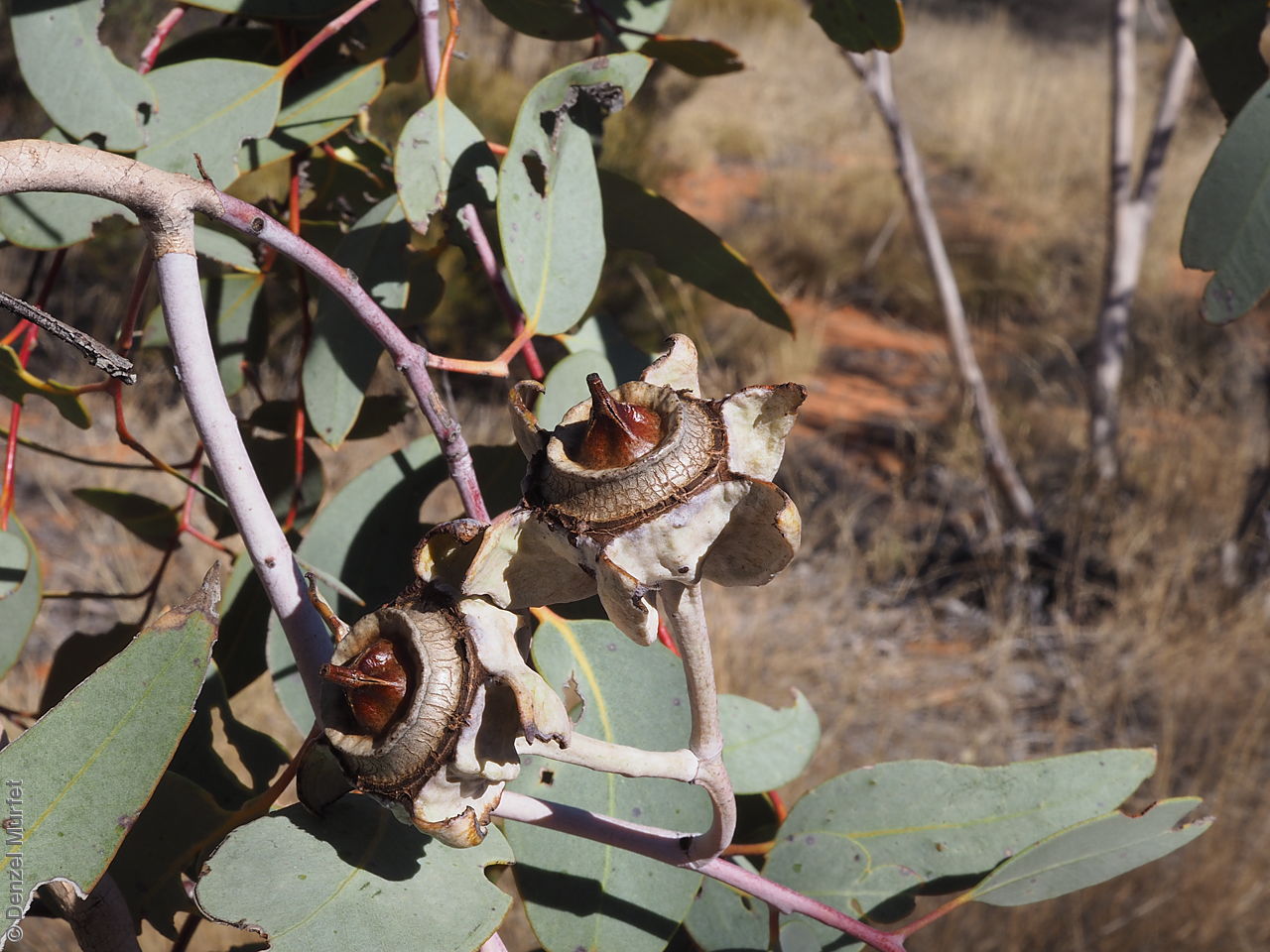
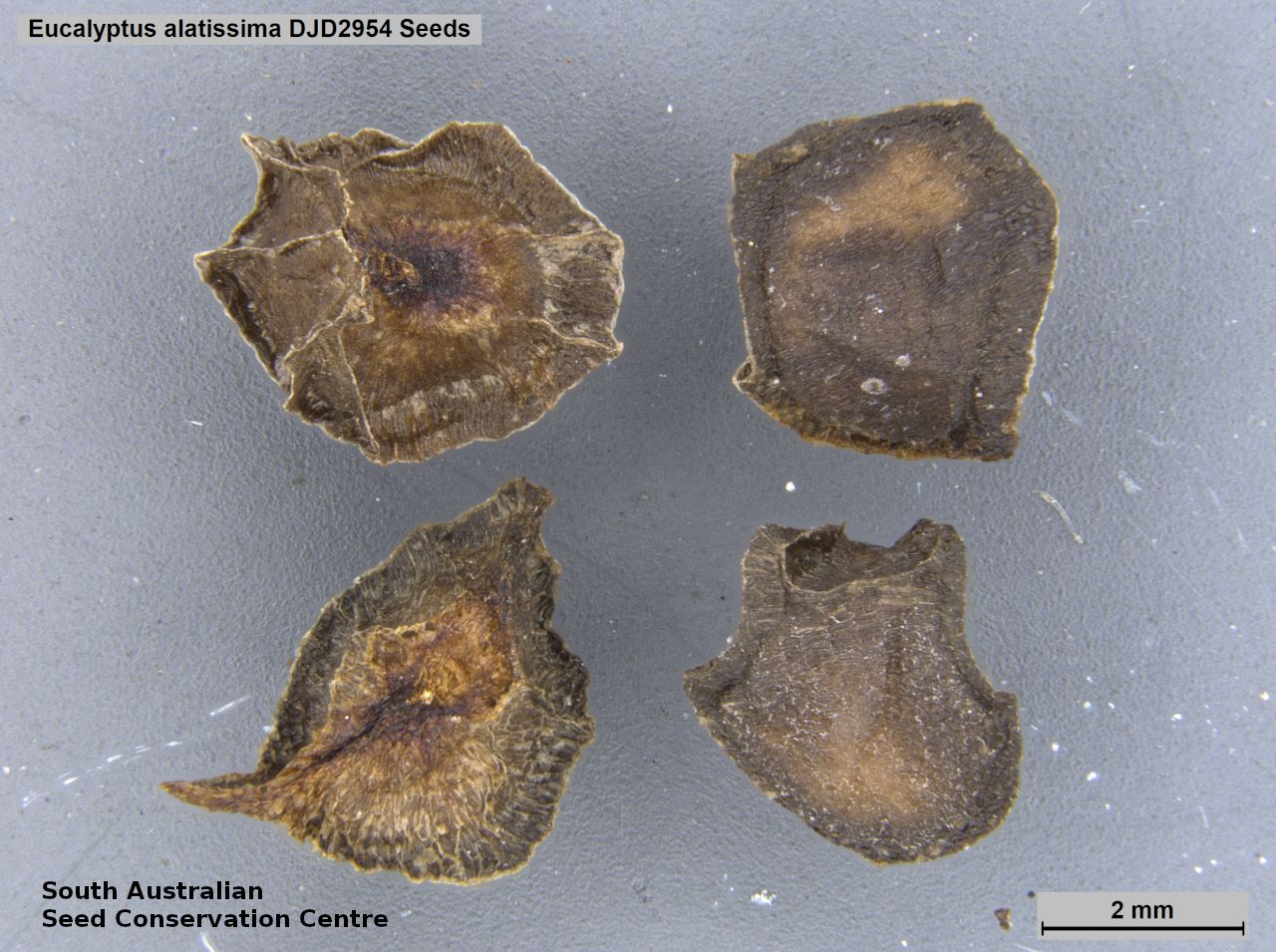

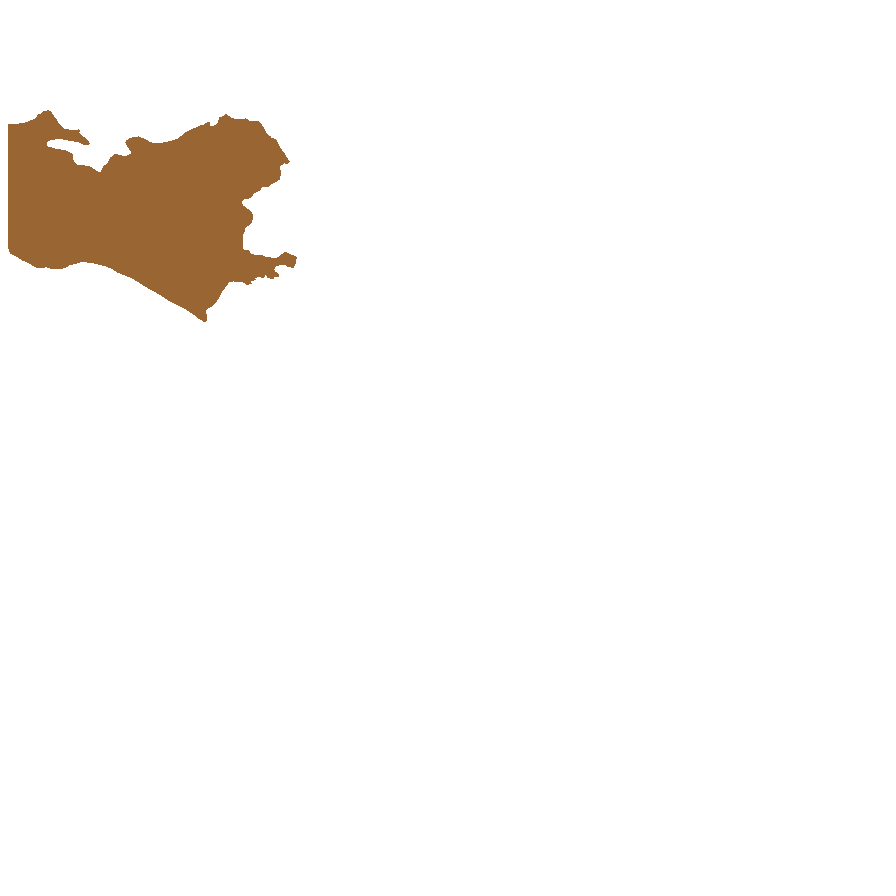
Prior names
Eucalyptus kingsmillii ssp. alatissima
Eucalyptus kingsmillii
Eucalyptus pachyphylla
Common names
Wing-fruited Mallee
Kingsmill's Mallee
Etymology
Eucalyptus from the Greek 'eu' well and 'calyptos' covered, alluding to the cap or lid which covers the stamens in the bud. Alatissima from the Latin 'alatus' meaning winged and 'issimus' meaning very much, referring to the prominetly winged buds and fruits.
Distribution and status
Restricted to the central western of South Australia growing on gravelly red sands and loams between sand dunes, in open mallee. Also found in Western Australia. Native. Rare in South Australia. Rare in Western Australia.
Herbarium region: North Western
NRM region: Alinytjara Wilurara
AVH map: SA distribution map (external link)
Plant description
Multi-stemmed or occasionally single-stemmed trees to 8 m high with smooth, tan to cream bark on the upper parts but rough and greyish below. Juvenile leaves opposite for a few pairs, then becoming alternate; petiolate, ovate to broad-lanceolate, dull, blue-green. Adult leaves ovate to lanceolate, green to grey-green; dull, to 100 mm long and 20 mm wide. Flowers in umbels of 3 in the axils of the leaves. Buds on pedicels usually to 20 mm long, globose to ovoid, with 5-8 prominent longitudinal wings; reddish, to 35 mm long and 20 mm wide. Bud-cap long beaked, as long as or longer than the hemispherical bud-base. Flowers pink to red, rarely yellow. Flowers in autumn and spring. Fruits are large woody fruit to 20 mm long and 45 mm wide; prominently longitudinally winged. Seeds are dark grey, pyramidal-shaped seed to 4 mm long and 4 mm wide. Seed embryo type is folded.
Seed collection and propagation
Collect seeds between July and May. Collect any time of year, mature fruits that are dark and hard (difficult to break with a finger nail), with the valves un-open, Leave the fruits in a breathable container in a dry room for one to two weeks. This allows the valves on the fruit to open and release the seeds. Separate the seeds by placing all the materials into a bucket and shaking it to dislodge the seeds. Pass the material through a sieve to separate the unwanted material. The finer material will contain both seeds (soft) and frass (hard) usually distinguishable from each other but can be very similar in shape and colour. With finer sieves, the seeds can be separated from the frass but this is not essential for storage or propagation. Store the seeds with a desiccant such as dried silica beads or dry rice, in an air tight container in a cool and dry place. From one collection, the seed viability was high, at 85%. Seeds are non-dormant, viable seed should germinate readily.
| Location | No. of seeds (weight grams) | Number of plants | Date collected | Collection number Collection location | Date stored | % Viability | Storage temperature |
|---|---|---|---|---|---|---|---|
| BGA MSB | 6,000 (11.73 g) 6,000 (11.73 g) | 8 | 21-May-2014 | DJD2954 North Western | 24-Mar-2015 | 85% | -18°C |
Number of plants: This is the number of plants from which the seeds were collected.
Collection location: The Herbarium of South Australia's region name.
% Viability: Percentage of filled healthy seeds determined by a cut test or x-ray.